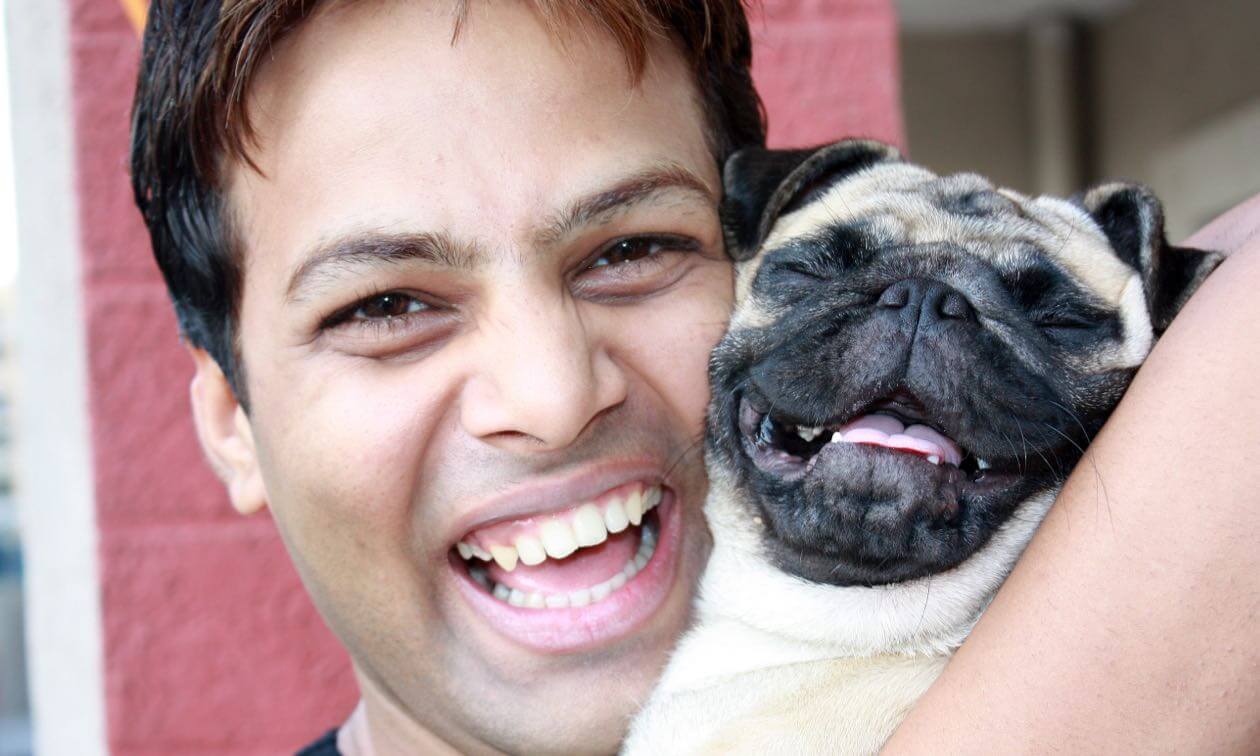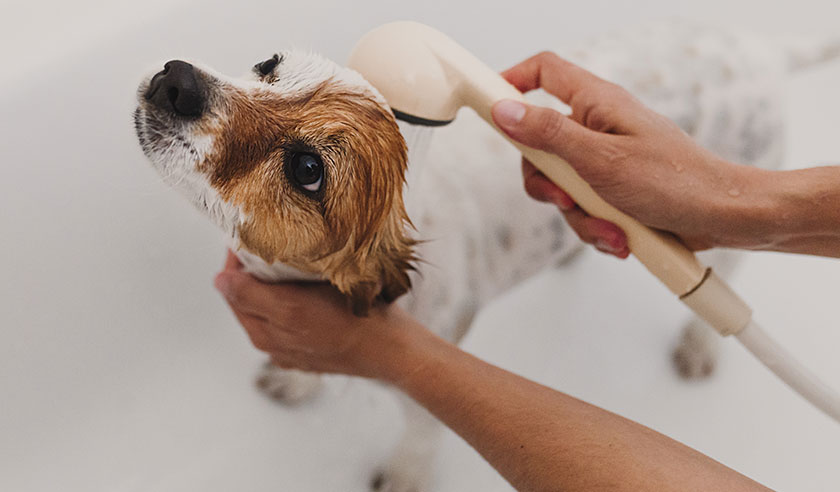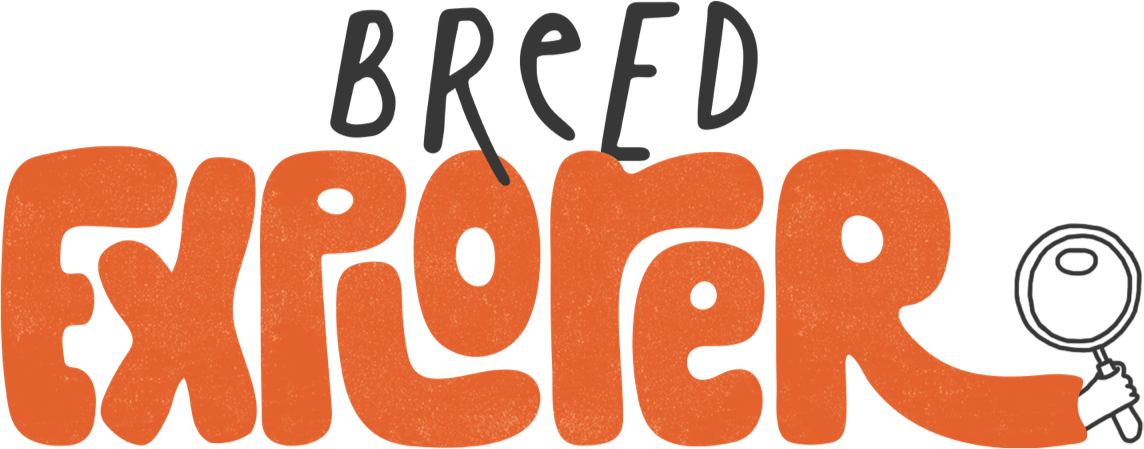Dogs with flat faces are irresistibly cute, with their smooshed noses and big, round eyes. Dog breeds with shorter snouts have grown in popularity in recent years, taking over social media with their antics. French Bulldogs even recently took over the lab’s spot as the number 1 dog in the US1 according to the American Kennel Club.
These dogs with the flat faces are called brachycephalic. If you’re looking at adding a brachycephalic dog breed to your life or have recently brought one home, you’ll need to be aware of the extra care they require to live their best life with you.
What is Brachycephaly in Dogs?
“Brachycephalic” is characterized by a variably shortened muzzle and a rounded, often massive, head2. This makes the face and nose appear flat or pushed in.
In comparison, “dolichocephalic” means long-headed, with a very long face compared to the width of the skull, and “mesocephalic” means typical length and width of the skull. Dogs aren’t the only animal species with brachycephalic breeds. Some cat breeds, such as the Persian or Exotic Shorthair, are also flat-faced.
What Dog Breeds Are Brachycephalic?
The American Kennel Club (AKC) lists the following as brachycephalic3:
You may also see brachycephaly in dogs who are a mix of one or more of the above breeds.
Common Health Conditions in Brachycephalic Dogs
The skull shape of brachycephalic dogs can cause or exacerbate certain health conditions. A particular set of upper airway abnormalities that affect these breeds is called brachycephalic airway syndrome (or brachycephalic respiratory syndrome). The syndrome includes:
- Laryngeal collapse. The larynx can’t open to a normal width due to the chronic stress placed on its cartilage by the other brachycephalic syndrome issues. When collapsed, there is further airflow restriction.
- Stenotic nares. These are abnormally narrow or small nostrils that restrict the flow of air into the nostrils.
- Elongated soft palate.
- Extended nasopharyngeal turbinates. The purpose of the nasopharyngeal turbinates is to help humidify and warm inhaled air. In brachycephalic breeds, these turbinates extend into the nasopharynx and partially block the entrance to the trachea affecting airflow.
These breeds are also at an increased risk of tracheal collapse, hypoplastic trachea (where the diameter is smaller than normal), and everted laryngeal saccules (where sacs within the larynx turn outward and block airflow).In addition to respiratory problems, they tend to have more allergy problems and skin inflammation with their skin folds on their face. They can tend to get other musculoskelataol injuries and can be more expensive to insure. Many of the brachycephalic breeds have to be born via a C section due to the large size of their head.
Caring For Your Brachycephalic Dog
Before you decide to get a brachycephalic breed, it’s a good idea to speak to your veterinarian about special care and needs associated with the breed. They may also have recommendations of breeders who do a good job minimizing health problems in their breed.
Grooming
A shorter nose typically means deeper skin folds and wrinkles on a brachycephalic dog’s face, and it’s important to keep these clean and dry to prevent yeast or bacteria growth.Wipe your dog’s skin folds daily with hypoallergenic grooming wipes. After baths or time spent in the water, make sure to thoroughly dry your dog’s face and body. Your veterinarian may recommend additional grooming with special ointments, washes, and creams.
Dental Care
Brachycephalic dogs can have overcrowded, rotated, or overlapping teeth, which makes them prone to gum infections. In some cases, your veterinarian may recommend dental extractions to reduce crowding or make your dog more comfortable. Maintaining a daily tooth care routine with your flat-faced dog is important to prevent future dental issues. Brush their teeth daily and give them veterinarian-approved dental chews regularly.
Airline Travel
Dogs with brachycephaly are at higher risk during air travel because of respiratory issues. Some airlines have banned brachycephalic dogs from traveling in cargo on their flights, only allowing them to fly if they are small enough to fit in a carry-on travel carrier. If you plan on traveling with your snub-nosed dog, you’ll want to consider the air travel requirements, speak with your veterinarian, and then decide if you are comfortable with the risk.
Walks
Since they are already predisposed to breathing issues (as described above), tracheal and laryngeal issues, and intervertebral disc disease (IVDD), avoiding any extra pressure on their necks is important. Using a harness instead of a collar for walks is a great way to do this.
Exercise Considerations for Brachycephalic Dogs
Because brachycephalic dogs are prone to breathing issues and have difficulty cooling themselves down, you’ll want to keep a close eye on their breathing rate and body temperature during physical activities. Here are a couple of tips:
- Speak with your veterinarian about what type and length of exercise are the least risky for your dog.
- Avoid exercise outdoors during warm weather or high humidity.
- Keep your dog at a healthy weight to help prevent thermoregulation issues.
- Closely monitor your dog during any physical exercise for signs of heat stress or heat stroke, which include:
- Excessive panting
- Abnormal gum color
- Dry mucous membranes
- Lethargy
- Disorientation
- Vomiting
- Diarrhea
- Seizures
- Loss of consciousness
- Collapse
ZPC-02549R1
- The Most Popular Dog Breeds of 2022. American Kennel Club. https://www.akc.org/expert-advice/dog-breeds/most-popular-dog-breeds-2022/. Accessed April 3, 2023.
- Ekenstedt KJ, Crosse KR, Risselada M. Canine Brachycephaly: Anatomy, Pathology, Genetics and Welfare. J Comp Pathol. 2020 Apr;176:109-115. doi: 10.1016/j.jcpa.2020.02.008. Epub 2020 Mar 17. PMID: 32359622; PMCID: PMC7380493.
- Brachycephalic Dog Breeds: A Guide to Flat-Faced Dogs. American Kennel Club. https://www.thekennelclub.org.uk/about-us/campaigns/brachycephalic-breeds/. Accessed March 20, 2024.





